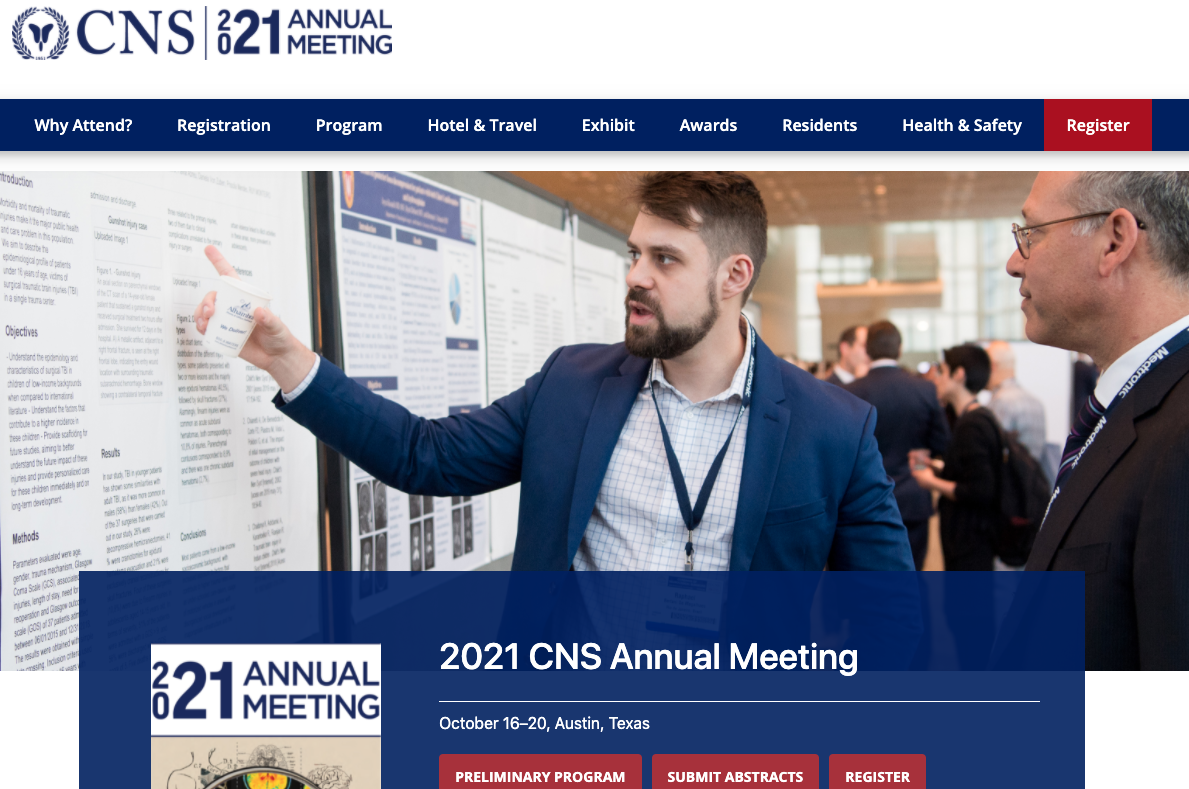X
X
Leaving Community
Are you sure you want to leave this community? Leaving the community will revoke any permissions you have been granted in this community.
No
Yes
X
Total 73 Results
| Label | Description | ILX | Version | Created CID | Modified Time | ||||||
|---|---|---|---|---|---|---|---|---|---|---|---|
| Allen CCF, Reference Atlas, 2017 Release | The 2017 release of the Allen Mouse Common Coordinate Framework, Reference Atlas. The Allen Mouse Brain Common Coordinate Framework (CCFv3) is a 3D reference atlas. An intensity and shape population average template brain serves as the basis of the reference space and coordinate system. The average was constructed at 10 µm voxel resolution by interpolating high resolution serial two-photon tomography images from 1,675 young adult C57BL/6J mice. Using multimodal reference data, the entire brain was directly parcellated in 3D, labeling every voxel with a brain structure from the Allen Mouse Reference Atlas Ontology. CCFv3 can be used to analyze, visualize, and integrate multimodal and multiscale datasets in 3D and is openly accessible (https://atlas.brain-map.org/). In the 2017 release, the parcellation spanned 43 isocortical areas and their layers, 329 subcortical gray matter structures, 81 fiber tracts, and 8 ventricular structures. | ILX:0777131 | 1 | NIF | 03/11/2021 | NIF | term | 03/11/2021 | 0 | Patrick Ray | Patrick Ray |
| Allen CCF, Reference Atlas, 2016 Release | The 2016 release of the Allen Mouse Common Coordinate Framework, Reference Atlas. The Allen Mouse Brain Common Coordinate Framework (CCFv3) is a 3D reference atlas. An intensity and shape population average template brain serves as the basis of the reference space and coordinate system. The average was constructed at 10 µm voxel resolution by interpolating high resolution serial two-photon tomography images from 1,675 young adult C57BL/6J mice. The brain was parcellated in 3D, labeling each voxel with a structure from the Allen Reference Atlas Ontology. The 2016 release update includes the complete 3D annotation of the isocortex, delineating 43 regions and 6 layers using gene expression and projection data and a novel curved cortical coordinates approach. | ILX:0777132 | 1 | NIF | 03/11/2021 | NIF | term | 03/11/2021 | 0 | Patrick Ray | Patrick Ray |
| Allen CCF, Reference Atlas, 2015 Release | The 2015 and initial release of the Allen Mouse Common Coordinate Framework, Reference Atlas. The Allen Mouse Brain Common Coordinate Framework (CCFv3) is a 3D reference atlas. An intensity and shape population average template brain serves as the basis of the reference space and coordinate system. The average was constructed at 10 µm voxel resolution by interpolating high resolution serial two-photon tomography images from 1,675 young adult C57BL/6J mice. The brain was parcellated in 3D, labeling each voxel with a structure from the Allen Reference Atlas Ontology. The 2015 release includes 185 regions that were annotated directly in 3D using multimodal reference data. These newly drawn structures spanned 50% of the brain. To obtain full brain coverage, remaining areas were filled with annotations imported from the Allen Mouse Reference Atlas, creating a hybrid parcellation scheme. The interface between the old and new structures were manually adjusted to have smooth transitions. | ILX:0777133 | 1 | NIF | 03/11/2021 | NIF | term | 03/11/2021 | 0 | Patrick Ray | Patrick Ray |
| Allen CCF, Coordinate System, 2015 Release | The 2015 and initial release of the Allen Mouse Common Coordinate Framework, Coordinate System. The reference space or brain template was constructed as a population average of 1,675 young adult C57BL/6J mice brains imaged using serial two photon tomography (STPT) for the Allen Mouse Brain Connectivity Atlas (Oh et. al, 2014, Kuan et al, 2015). The average template was created from tissue autofluorescence detected in the red channel. To maximize input data and create a symmetrical atlas, each dataset was reflected across the midline, for a total of 3,350 (2 x 1,675) hemisphere datasets. Creation of the template followed a two-step iterative process: (1) We deformably registered each specimen to the current iteration of the template and computed an intensity average. (2) We then computed the average deformation field, inverted it, and applied it to the intensity average created in (1). This resulted in a volume with an average unbiased shape and intensity to be used as the template in the next iteration until convergence. In 10 µm resolution, the average template contains 506 million voxels with dimensions are 1,320 (X axis, anterior to posterior, 13.2 mm) x 1,140 (Y axis, left to right, 11.4 mm) x 800 (Z axis, dorsal to ventral, 8.0 mm). The origin of the coordinates is located at the the most anterior, left and dorsal corner of the volume. Due to constraint of the original data, the most rostral part of the main olfactory bulb and the most caudal parts of the medulla and cerebellum are excluded in the template. | ILX:0777134 | 1 | NIF | 03/11/2021 | NIF | term | 03/11/2021 | 0 | Patrick Ray | Patrick Ray |
| Allen CCF, Annotation, 2017 Release | The 2017 release of the Allen Mouse Common Coordinate Framework, Annotation The process of parcellating the average template of the CCF is detailed in Wang et al, 2020. For any given structure, the process starts with a review of previously published atlases and literature and visual analyses of the average template and multimodal reference datasets. Data types include (1) transgenic expression data imaged with two-photon serial tomography, (2) axonal projection data from the Allen Mouse Connectivity Atlas, (3) immunohistochemical and (4) cytoarchitectural stains, including antibodies against NeuN, NF-160, SMI-32, parvalbumin, SMI-99, and calbindin, as well as stains for DAPI, Nissl, and AChE; and (5) in situ hybridization (ISH) gene expression data from the Allen Mouse Brain Atlas. Specific datasets used for the delineation of brain structures are listed in supplementary table Table S3 of Wang et. al., 2020. The format of the annotation is a 10 µm resolution image volume of the same size and orientation as the average brain template. Each voxel in the brain is labeled with a structure from the Allen Mouse Reference Atlas, Ontology. Voxels are annotated with the label for the most specific (finest) structure that it is a part of. It is inferred the voxel is also a part of any enclosing/parent structures as defined in the hierarchical tree of the ontology. In the 2017 release, the parcellation spanned 43 isocortical areas and their layers, 329 subcortical gray matter structures, 81 fiber tracts, and 8 ventricular structures. | ILX:0777135 | 1 | NIF | 03/11/2021 | NIF | term | 03/11/2021 | 0 | Patrick Ray | Patrick Ray |
| Allen CCF, Annotation, 2016 Release | The 2016 release of the Allen Mouse Common Coordinate Framework, Annotation The process of parcellating the average template of the CCF is detailed in Wang et al, 2020. For any given structure, the process starts with a review of previously published atlases and literature and visual analyses of the average template and multimodal reference datasets. Data types include (1) transgenic expression data imaged with two-photon serial tomography, (2) axonal projection data from the Allen Mouse Connectivity Atlas, (3) immunohistochemical and (4) cytoarchitectural stains, including antibodies against NeuN, NF-160, SMI-32, parvalbumin, SMI-99, and calbindin, as well as stains for DAPI, Nissl, and AChE; and (5) in situ hybridization (ISH) gene expression data from the Allen Mouse Brain Atlas. Specific datasets used for the delineation of brain structures are listed in supplementary table Table S3 of Wang et. al., 2020. The format of the annotation is a 10 µm resolution image volume of the same size and orientation as the average brain template. Each voxel in the brain is labeled with a structure from the Allen Mouse Reference Atlas, Ontology. Voxels are annotated with the label for the most specific (finest) structure that it is a part of. It is inferred the voxel is also a part of any enclosing/parent structures as defined in the hierarchical tree of the ontology. The 2016 update includes the complete 3D annotation of the isocortex, delineating 43 regions and 6 layers using gene expression and projection data and a novel curved cortical coordinates approach. | ILX:0777136 | 1 | NIF | 03/11/2021 | NIF | term | 03/11/2021 | 0 | Patrick Ray | Patrick Ray |
| Allen CCF, Annotation, 2015 Release | The 2015 and initial release of the Allen Mouse Common Coordinate Framework, Annotation The process of parcellating the average template of the CCF is detailed in Wang et al, 2020. For any given structure, the process starts with a review of previously published atlases and literature and visual analyses of the average template and multimodal reference datasets. Data types include (1) transgenic expression data imaged with two-photon serial tomography, (2) axonal projection data from the Allen Mouse Connectivity Atlas, (3) immunohistochemical and (4) cytoarchitectural stains, including antibodies against NeuN, NF-160, SMI-32, parvalbumin, SMI-99, and calbindin, as well as stains for DAPI, Nissl, and AChE; and (5) in situ hybridization (ISH) gene expression data from the Allen Mouse Brain Atlas. Specific datasets used for the delineation of brain structures are listed in supplementary table Table S3 of Wang et. al., 2020. The format of the annotation is a 10 µm resolution image volume of the same size and orientation as the average brain template. Each voxel in the brain is labeled with a structure from the Allen Mouse Reference Atlas, Ontology. Voxels are annotated with the label for the most specific (finest) structure that it is a part of. It is inferred the voxel is also a part of any enclosing/parent structures as defined in the hierarchical tree of the ontology. The 2015 release includes 185 regions that were annotated directly in 3D using multimodal reference data. These newly drawn structures spanned 50% of the brain. To obtain full brain coverage, remaining areas were filled with annotations imported from the Allen Mouse Reference Atlas, creating a hybrid parcellation scheme. The interface between the old and new structures were manually adjusted to have smooth transitions. | ILX:0777137 | 1 | NIF | 03/11/2021 | NIF | term | 03/11/2021 | 0 | Patrick Ray | Patrick Ray |
| Allen Mouse Reference Atlas, Ontology, 2017 Release | The 2017 release of the Allen Mouse Reference Atlas, Ontology. The Allen Mouse Reference Atlas, Ontology defines a hierarchical partonomy of the anatomical structures of the adult mouse brain. At the top level, the brain is divided into gray matter, fiber tracts and ventricular systems. Gray matter is subdivided into three large regions (cerebrum, brain stem, and cerebellum), which are themselves organized into subregions in a hierarchical tree. The Allen Mouse Reference Atlas, Ontology was developed for the Allen Reference Atlas (Dong, 2008) and follows terminology from “Brain Maps: Structure for the Rat Brain” (Swanson, 2004, 2018). The ontology has been subsequently extended and revised to also serve as the structure ontology for the Allen Mouse Common Coordinate Framework (Wang et al, 2020). This 2017 release of the Allen Mouse Reference Atlas, Ontology is in support of the 2017 Release of the Allen Mouse Common Framework. | ILX:0777138 | 1 | NIF | 03/11/2021 | NIF | term | 03/11/2021 | 0 | Patrick Ray | Patrick Ray |
| Allen Mouse Reference Atlas, Ontology, 2016 Release | The 2016 release of the Allen Mouse Reference Atlas, Ontology. The Allen Mouse Reference Atlas, Ontology defines a hierarchical partonomy of the anatomical structures of the adult mouse brain. At the top level, the brain is divided into gray matter, fiber tracts and ventricular systems. Gray matter is subdivided into three large regions (cerebrum, brain stem, and cerebellum), which are themselves organized into subregions in a hierarchical tree. The Allen Mouse Reference Atlas, Ontology was developed for the Allen Reference Atlas (Dong, 2008) and follows terminology from “Brain Maps: Structure for the Rat Brain” (Swanson, 2004, 2018). The ontology has been subsequently extended and revised to also serve as the structure ontology for the Allen Mouse Common Coordinate Framework (Wang et al, 2020). This 2016 release of the Allen Mouse Reference Atlas, Ontology is in support of the 2016 Release of the Allen Mouse Common Framework. | ILX:0777139 | 1 | NIF | 03/11/2021 | NIF | term | 03/11/2021 | 0 | Patrick Ray | Patrick Ray |
| Allen Mouse Reference Atlas, Ontology, 2015 Release | The 2015 release of the Allen Mouse Reference Atlas, Ontology. The Allen Mouse Reference Atlas, Ontology defines a hierarchical partonomy of the anatomical structures of the adult mouse brain. At the top level, the brain is divided into gray matter, fiber tracts and ventricular systems. Gray matter is subdivided into three large regions (cerebrum, brain stem, and cerebellum), which are themselves organized into subregions in a hierarchical tree. The Allen Mouse Reference Atlas, Ontology was developed for the Allen Reference Atlas (Dong, 2008) and follows terminology from “Brain Maps: Structure for the Rat Brain” (Swanson, 2004, 2018). The ontology has been subsequently extended and revised to also serve as the structure ontology for the Allen Mouse Common Coordinate Framework (Wang et al, 2020). This 2015 release of the Allen Mouse Reference Atlas, Ontology is in support of the 2015 Release of the Allen Mouse Common Framework. | ILX:0777140 | 1 | NIF | 03/11/2021 | NIF | term | 03/11/2021 | 0 | Patrick Ray | Patrick Ray |
| Wild type allele | The allele found most frequently in natural populations, or in standard laboratory stocks for a given organism | ILX:0778023 | 2 | NIF | 04/01/2021 | NIF | term | 04/01/2021 | 0 | Lydia Ng | Lydia Ng |
| specializationOf | ILX:0778032 | 1 | NIF | 04/07/2021 | NIF | relationship | 04/07/2021 | 0 | Patrick Ray | Patrick Ray | |
| Allen Mouse Reference Atlas, Ontology | The Allen Mouse Reference Atlas, Ontology defines a hierarchical partonomy of the anatomical structures of the adult mouse brain. At the top level, the brain is divided into gray matter, fiber tracts and ventricular systems. Gray matter is subdivided into three large regions (cerebrum, brain stem, and cerebellum), which are themselves organized into subregions in a hierarchical tree. The Allen Mouse Reference Atlas, Ontology was developed for the Allen Reference Atlas (Dong, 2008) and follows terminology from “Brain Maps: Structure for the Rat Brain” (Swanson, 2004, 2018). The ontology has been subsequently extended and revised to also serve as the structure ontology for the Allen Mouse Common Coordinate Framework (Wang et al, 2020). | ILX:0778031 | 2 | NIF | 04/07/2021 | NIF | term | 04/07/2021 | 0 | Patrick Ray | Patrick Ray |
| Allen Mouse Brain Common Coordinate Framework | The Allen Mouse Brain Common Coordinate Framework (CCFv3) is a 3D reference atlas. An intensity and shape population average template brain serves as the basis of the reference space and coordinate system. The average was constructed at 10 µm voxel resolution by interpolating high resolution serial two-photon tomography images from 1,675 young adult C57BL/6J mice. Using multimodal reference data, the entire brain was directly parcellated in 3D, labeling every voxel with a brain structure from the Allen Mouse Reference Atlas Ontology. CCFv3 can be used to analyze, visualize, and integrate multimodal and multiscale datasets in 3D and is openly accessible (https://atlas.brain-map.org/). In the 2017 release, the parcellation spanned 43 isocortical areas and their layers, 329 subcortical gray matter structures, 81 fiber tracts, and 8 ventricular structures. | ILX:0778030 | 2 | NIF | 04/07/2021 | NIF | term | 04/07/2021 | 0 | Patrick Ray | Patrick Ray |
| Mindwrecking | The practice of deliberately inflicting psychological damage | ILX:0778033 | 1 | NIF | 04/20/2021 | NIF | term | 04/20/2021 | 0 | Paola Di Maio | Paola Di Maio |
| Mindfucking | the deliberate infliction of psychological damage | ILX:0778034 | 1 | NIF | 04/20/2021 | NIF | term | 04/20/2021 | 0 | Paola Di Maio | Paola Di Maio |
| Cre-ERT2 fusion protein | ILX:0778021 | 3 | NIF | 05/13/2021 | NIF | term | 04/01/2021 | 0 | Lydia Ng | troy sincomb | |
| dgCre fusion protein | ILX:0778020 | 3 | NIF | 05/13/2021 | NIF | term | 04/01/2021 | 0 | Lydia Ng | troy sincomb | |
| tdTomato fluorescent protein | ILX:0778019 | 3 | NIF | 05/13/2021 | NIF | term | 04/01/2021 | 0 | Lydia Ng | troy sincomb | |
| ChrimsonR-tdTomato fusion fluorescent protein | ILX:0778022 | 3 | NIF | 05/13/2021 | NIF | term | 04/01/2021 | 0 | Lydia Ng | troy sincomb |
X










